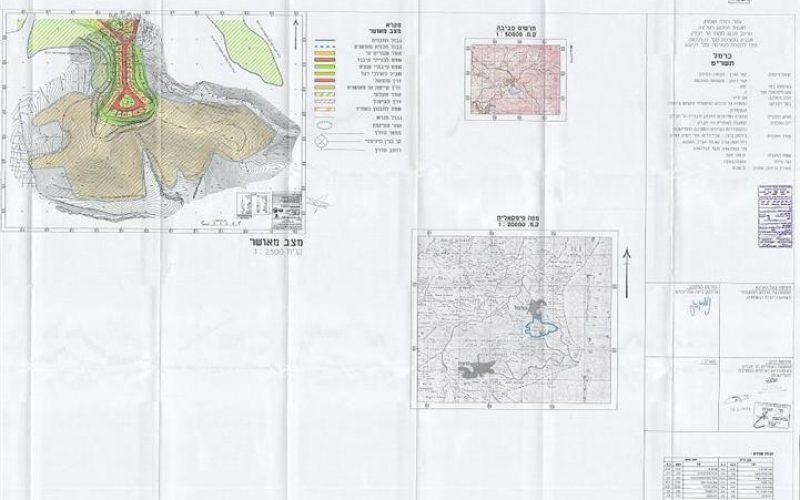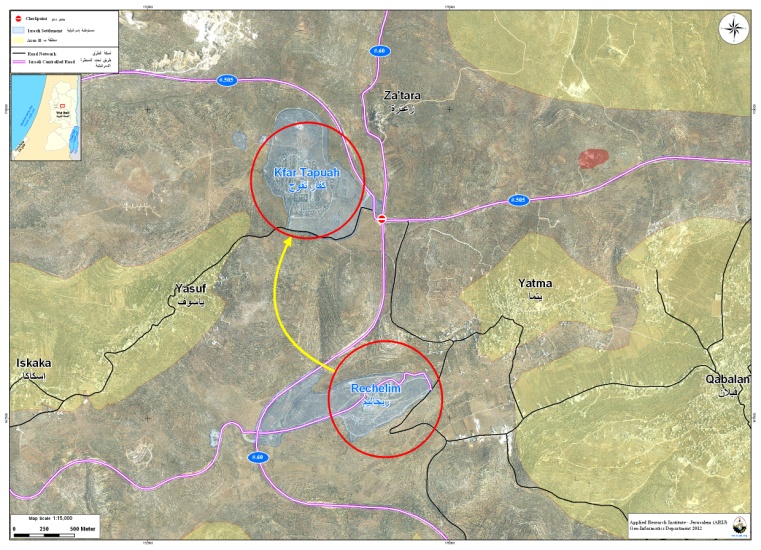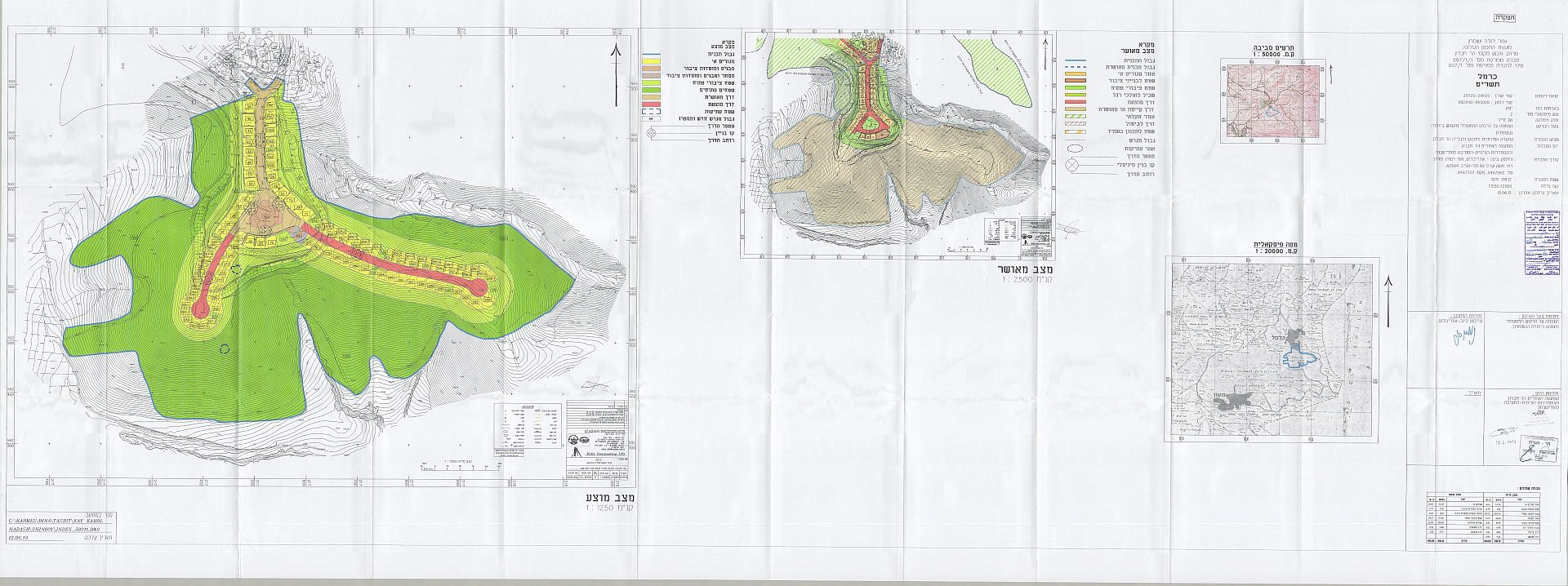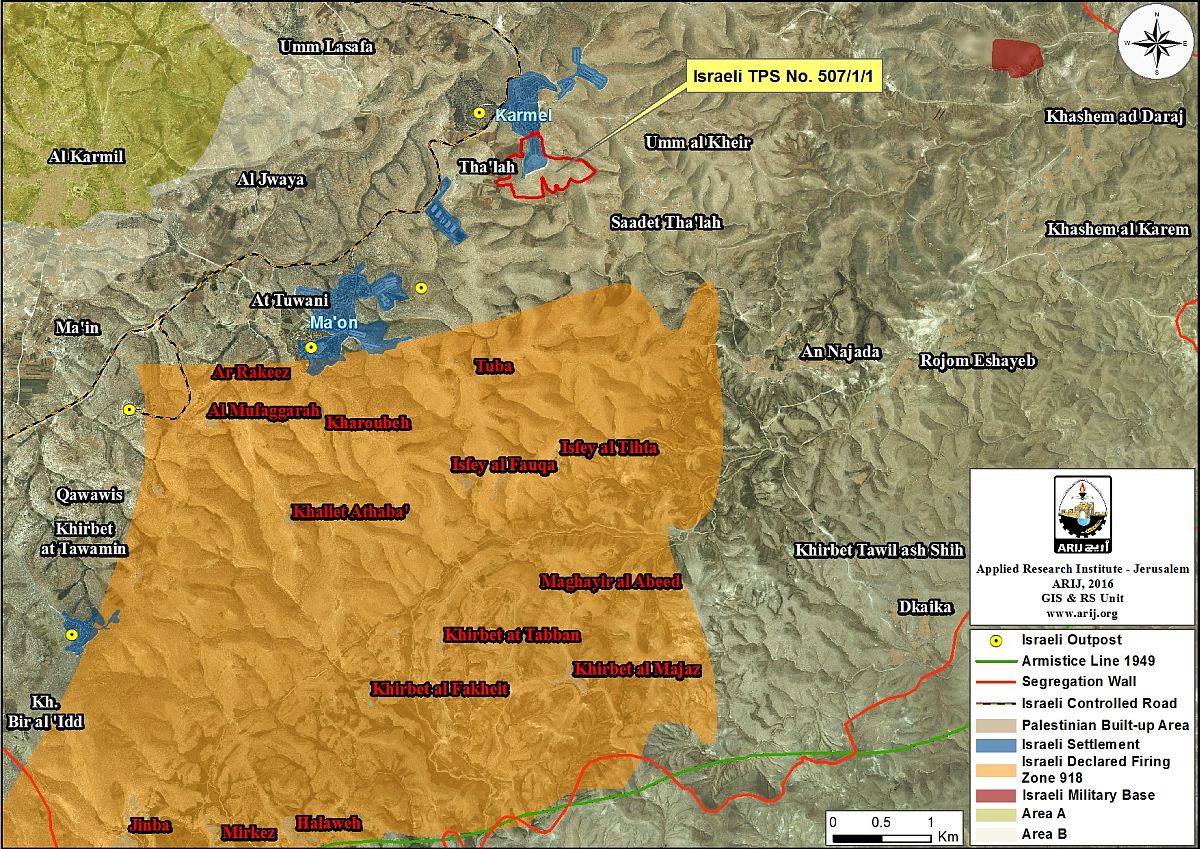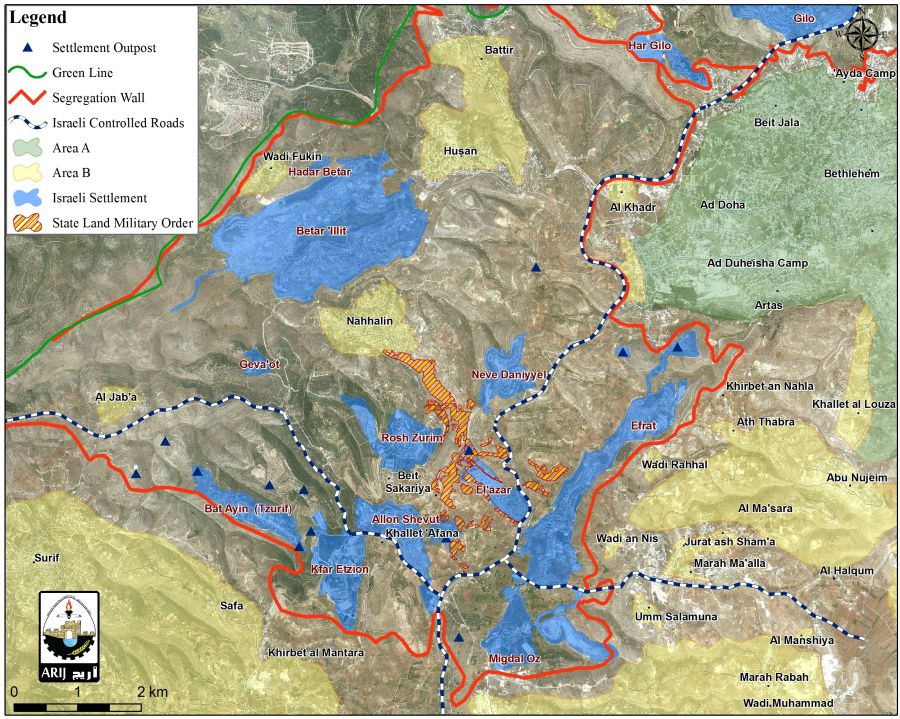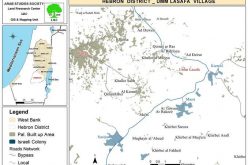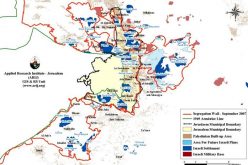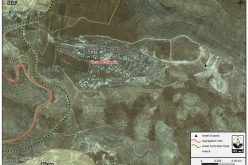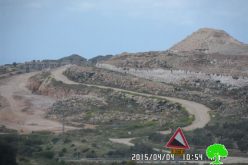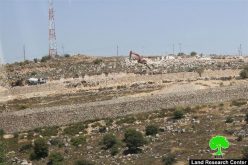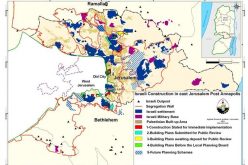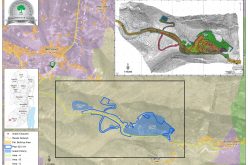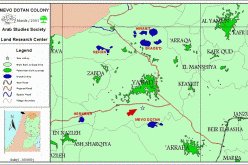On the 25th of January 2016, the Israeli media reported that the so-called Israeli “Defense Forces' Civil Administration” in the occupied West Bank and other planning and building bodies in the Israeli Government, has approved the construction and legalization of 153 new housing units in a number of Israeli settlements in the occupied West Bank. The construction plans are to be built in four existing Israeli settlements across the occupied West Bank, including Etz Ephraim and Rechalim settlements in Salfit Governorate, Alon Shevut settlement in Bethlehem Governorate, and Carmel settlement in the southern Hebron Hills. See Map 1
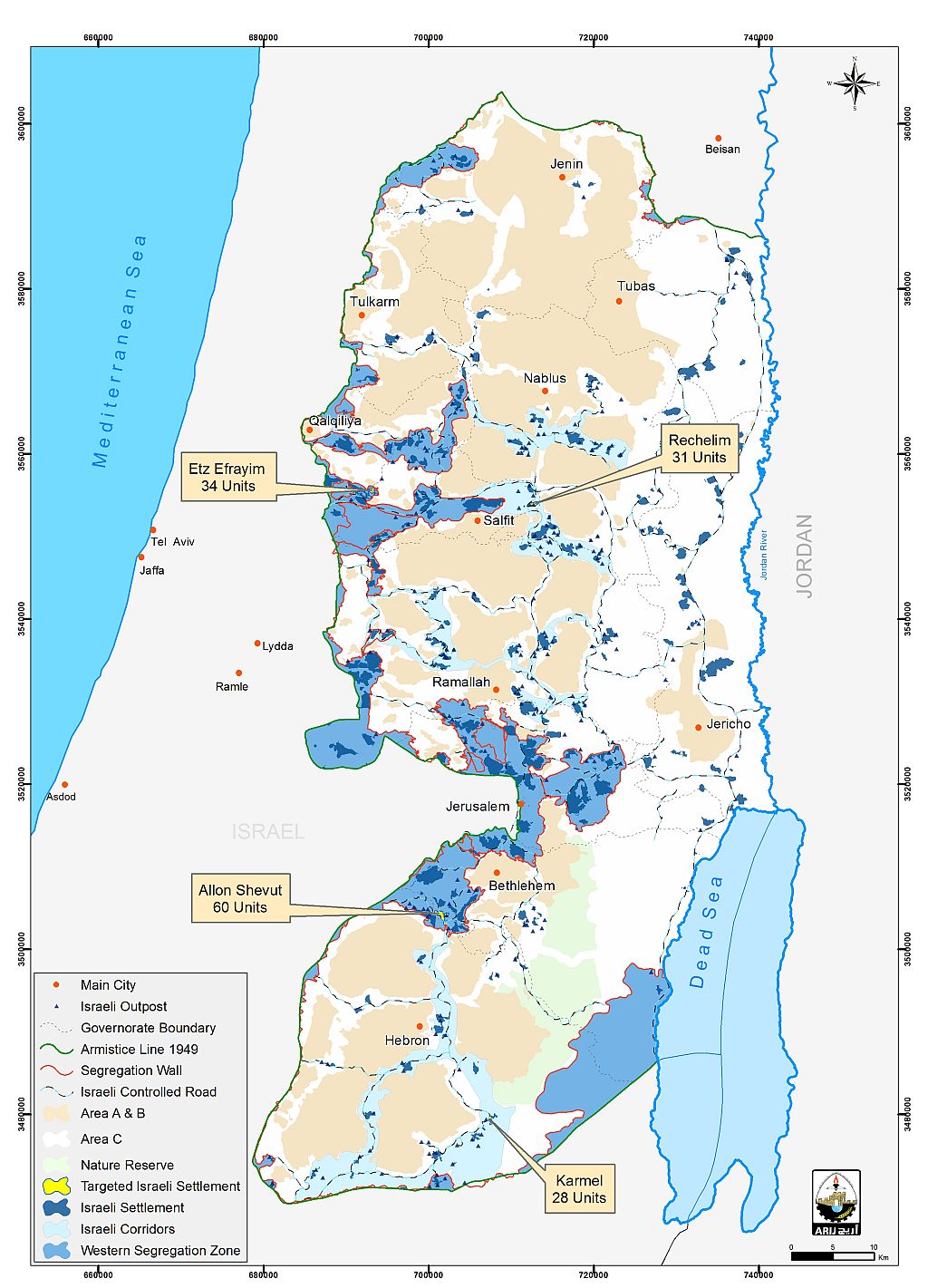
Map 1: The Israeli Settlements to be expnaded in the occupied West Bank
Meanwhile, Palestinians in the occupied West Bank are hardly granted building permits to build in the area classified “C”[1], which according to OSLO II interim agreement of 1995, this 61 percent area of the West Bank falls under the full Israeli military control. Statistical Analysis prepared by the applied Research Institute – Jerusalem (ARIJ) showed that during the year 2015, a total of 281 Palestinian homes were demolished in the occupied West Bank, along with 629 others received demolition orders. This clearly shows the discriminatory policy Israel is pursuing in the occupied West Bank that has no legitimate justification to denying Palestinians of their basic rights while providing settlements with privileges. The following explains the plans in the aforementioned Israeli settlements:-
The first construction plan serves the settlement of Etz Ephraim in Salfit Governorate north of the West Bank. Israel will advance the construction of 34 new units in the settlement, on 46 dunums of Palestinian land. The new housing units are part of a larger plan that includes the construction of 500 units in the settlement, to its north, and hold Number 126/6 and 126/7, on lands of Mas-ha and Sanniryia villages in Salfit Governorate. See Figure 1
Figure 1: Israeli Plan Number 126/6 and 126/7 in Etz Ephraim settlement
Source: Yoram Raz Architecture
Note that the construction of the Israeli Segregation Wall in the occupied West Bank has set the settlement of Etz Ephraim on the west side of the wall, in the area that has become known to the Palestinians, as the “Western Segregation Zone”, the area isolated between the 1949 Armistice Line and the path of the Israeli Segregation Wall.
Etz Ephraim settlement was established in 1985, on lands belonging to Mas-ha village in Salfit Governorate. Today, more than 1500 Israeli settlers live in the settlement which already occupies a total land area of 582 dunums.
2- In the settlement of Rechalim, also located in Salfit Governorate, the Israeli civil Administration will advance the construction of 31 new units. Analysis of Rechalim location shows that the settlement along with five other surrounding settlements, Kfar Taphuh, Eli, Ma’ale Levona, Shilo and Shevut Rachel (Mitzpe Rahel), populate a corridor that links the eastern area of the West Bank (the Jordan Valley and Dead Sea area) with the western segregation zone (WSZ). Additionally, the plan of the Israeli Segregation wall did not meet the expectations of Israel's settlement project in the occupied Palestinian territory as many Israeli settlements, including Rechalim, that are of strategic, geographic and religious importance have remained outside the wall path (on the eastern side of the wall), and Israel has not included them in any future colonial plan. Therefore, Israel is intensifying settlement building in the aforementioned settlement corridor (including Rechalim), so that at the end, it will annex as many settlements as possible to its proper along with the 108 settlements planned to be annexed to Israel’s proper upon wall completion.
Earlier on the 17th of April 2012 the Israeli Prime Minister, Benyamin Netanyahu, approved plans to formalize the status of three illegal settlements in the occupied West Bank after receiving recommendations approved by the so-called ex-Israeli “Defense Minister”, Ehud Barak, including the settlement of Rechalim. Accordingly, Rechalim settlement is to become part of Kfar Taphuh settlement[2], 1.5 km away from it. See Map 2
Map 2: Rechalim and Kfar Taphuh settlements
The settlement of Rechalim was established in 1991, on lands of Es Sawiya and Yasuf villages in Salfit Governorate. Today, the settlement occupies a total land area of 490 dunums where almost 530 Israeli settlers reside.
The Israeli Civil Administration also approved the construction of 28 new apartments in Carmel settlement in the southern Hebron hills, to replace some existing mobile homes in the settlement with permanent structures. While Israel is allowing building in Carmel settlement, eight Palestinian communities located in the vicinity of Carmel settlement, to its south, are threatened of demolition and evacuation, due to their location in an area classified by Israel as “Firing Zone 918”[3]. In July 2012, the Israeli ex-“defense minister”, Ehud Barack, ordered to evacuate eight out of twelve Palestinian communities located in the southern Hebron Hills, with around 1,000 residents, and make way for an “Israeli Firing Zone” named “Firing Zone 918”. The threatened communities are: Asfai, Al-Fakheit, Al-Halaweh, Al-Kharuba, At-Tabban, Al-Majaz, Al-Mirjaz and Jinba villages.
Earlier in 2013, the Israeli Civil Administration has prepared a plan to expand Carmel settlement in Hebron Governorate. The plan holds number 507/1/1 and includes the expansion of the settlement towards the south, by 318 dunums. Typically, the expansion will affect the lands of the nearby Palestinian community of Yatta. See Figure 2
Figure 2: Israeli Plan No. 507/1/1 in Carmel settlement south of Hebron
The settlement of Carmel was established in 1981. It currently occupies an area of 376 dunums where more than 400 Israeli settlers reside. Table 2 lists the plans that were approved in the settlement of Carmel during the previous years.
|
Table 2: Previously approved building plans in Carmel Settlement in Hebron Governorate |
|||||
|
No. |
Settlement Name |
Plan No. |
Approval Date |
Area |
Type of Building |
|
1 |
Carmel |
507 |
01/05/91
|
188.747 |
Residential |
|
2 |
Carmel |
507/1[4] |
22/06/05 |
2210.041 |
Master Plan (Residential, and public) |
|
|
Carmel |
507/1/1[5] |
13/06/2013 |
318.12 |
|
|
Source: TABANOW |
|||||
Map 3: Israeli plans in Carmel settlement and the southern Hebron Hills
In Alon Shevut settlement, to the southwest of Bethlehem city, the Israeli civil Administration also approved the construction of 60 new settlement units on a 10 dunums piece of land. The settlement is one among 11 Israeli settlements comprising what is known by Israel as the “Gush Etzion bloc”, an occupied Palestinian area that Israel aims to illegally annex to its unilaterally declared Jerusalem boundary through the construction of the Segregation Wall.
The building approval in Alon Shevut settlement is one out of many plans Israel is advancing in the area. On the 6th of January 2016, the Israeli Occupation Minister, Moshe Ya’alon, has officially approved the request of the so called "Gush Etzion local council", to add the 40-dunum property of Bayt Al Baraka compound located along the Israeli bypass road No. 60, and which was purchased last year by an American organization (backed by right-wing American Jewish millionaire Irving Moskowitz), to the boundaries of the so-called "Gush Etzion" bloc[6].
Furthermore, Israel is planning for another settlement in the area between Bayt Al Baraka compound and the Migdal Oz settlement. The plan holds No. 407/3 and aims at annexing another 152.6 dunums of Palestinian owned land in the area, to set up a "tourist attraction" site (settlement) affiliated to the settlement of Migdal Oz[7].
Additionally, In 2014, the “Custodian of Absentee property & Israel Land Authority of Judea and Samaria ” attached to the Israeli Ministry of Defense/Civil Administration, Yousi Sigal, issued a military order to seize 984 dunums of land from Bethlehem and Hebron Governorates, mainly in Al Khader, Nahhalin and Beit Ummer, by declaring it “State Land”. See Map 4 [8]
Map 4: Israeli Order Concerning State Property (Judea & Samaria) (No. 59-1967)
Settlements Building in International Law
The establishment and expansion of Israeli settlements in the occupied West Bank violates international humanitarian law and international human rights law. Over the years of occupation, Israel used confiscated Palestinian land to benefit Israeli settlements while forbade Palestinians from exploiting them in any way possible. Article 49 of the Fourth Geneva Convention[9] clearly states that “The Occupying Power shall not deport or transfer parts of its own civilian population into the territory it occupies”. Also article 23 of the Hague Regulations[10] expressly forbids an occupying power 'to destroy or seize the enemy's property, unless such destruction or seizure be imperatively demanded by the necessities of war'. In addition, Israeli settlements violate United Nations Security Council Resolutions 452 of 1979[11] which calls upon “the Government and people of Israel to cease, on an urgent basis, the establishment, construction and planning of settlements in the Arab territories occupied since 1967, including Jerusalem.”
[1] In the Oslo II Interim Agreement of September 1995 between the Palestinian National Authority and Israel, the Palestinian areas were categorized into three areas (A, B, and C) which aimed at a phased withdrawal of the Israeli military forces from these areas until the accomplishment of a final status agreement.
[2] “Netanyahu & Peace”: In His Case….Opposites don’t Attract
http://www.old.poica.org/details.php?Article=3855
[3] Ecstasy vs. Siesta: Israel Ecstatic vs. International Community Siesta & the Two-State Solution RIP
http://www.old.poica.org/details.php?Article=7318
[4] הרקע להגשת חוות הדעת
http://bimkom.org/wp-content/uploads/hathaleen-dkeike-expert-opinion.pdf
[5] מסך פרטי ישות תכנונית תוכנית יוש/ 1/ 1/ 507
http://mavat.moin.gov.il/MavatPS/Forms/SV4.aspx?tid=4
[6] Israel introduces another settlement in the so called “Gush Etzion Settlement Bloc” http://www.old.poica.org/details.php?Article=8065
[7] Migdal Oz settlement was established in 1977 on Palestinian owned land of Beit Ummar, Beit Fajar and Al Khader communities. The settlement today occupies a total land area of 1211 dunums and houses a total population of nearly 900 Israeli settlers.
[8] “To Fortify Gush Etzion Settlement Bloc”, Expropriation of 984 Dunums of Bethlehem Lands
http://www.old.poica.org/details.php?Article=6284
[9] Convention (IV) relative to the Protection of Civilian Persons in Time of War. Geneva, 12 August 1949.
DEPORTATIONS, TRANSFERS, EVACUATIONS
https://www.icrc.org/ihl/WebART/380-600056
[10] Convention (IV) respecting the Laws and Customs of War on Land and its annex: Regulations concerning the Laws and Customs of War on Land. The Hague, 18 October 1907.
https://www.icrc.org/applic/ihl/ihl.nsf/Article.xsp?action=openDocument&documentId=61CDD9E446504870C12563CD00516768
[11] Resolution 452 of 1979
http://daccess-dds-ny.un.org/doc/RESOLUTION/GEN/NR0/370/66/IMG/NR037066.pdf?OpenElement
Prepared by:
The Applied Research Institute – Jerusalem


